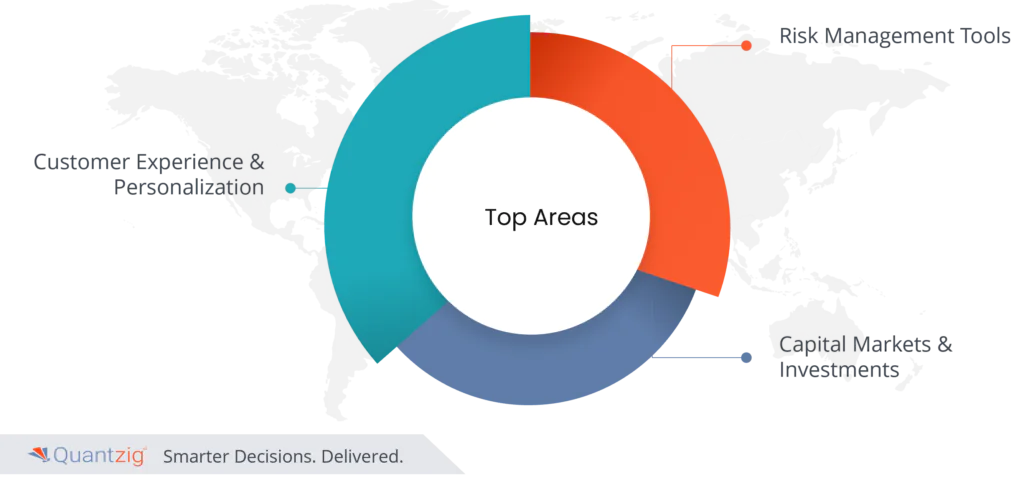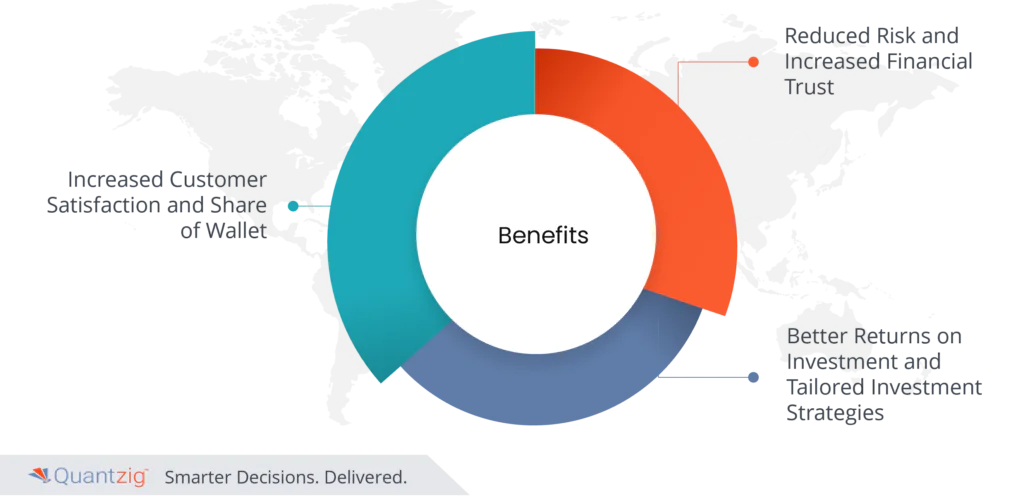The financial services sector is undergoing a paradigm shift fueled by AI-driven finance automation. Outdated manual processes, isolated systems, and reactive decision-making are being replaced by intelligent ecosystems that prioritize agility, precision, and personalization. AI-driven automation is no longer an accessory it’s a strategic pillar enabling real-time risk mitigation, scalable operations, and customer-centric innovation.
With pressure mounting from fintech disruptors and increasingly digital-native customers, automation in finance has transitioned from optional to essential. Whether it’s eliminating inefficiencies in transaction processing or enhancing compliance with regulatory frameworks, AI-driven automation is driving measurable transformation across the finance industry
Table of Contents
Reimagining Operations Through AI-Driven Finance Automation
Eliminating Manual, Time-Consuming Processes
Banking has long relied on legacy systems and human-intensive tasks for essential operations such as loan processing, reconciliation, and customer onboarding. These manual workflows are not only slow but prone to error and compliance risk.
AI technologies—particularly machine learning and intelligent automation—are now capable of streamlining such operations. Natural language understanding and decision engines can instantly review credit applications, validate document data, and execute decisions with precision. This shift allows banks to move from static workflows to adaptive, data-informed processes that can evolve with regulatory and market changes.
In 2024 and beyond, financial institutions are increasingly deploying AI-powered decision bots and cognitive automation platforms to replace repetitive roles, enhancing both efficiency and governance.
AI + RPA: Intelligent Workflow Automation
Robotic Process Automation (RPA) has delivered significant efficiencies in automating rules-based tasks, but it remains limited without intelligence. The latest trend in finance is the integration of RPA with AI and ML to create cognitive workflows. These systems go beyond rote task execution—they learn, make context-based decisions, and continuously improve outcomes.
For example, intelligent automation is used in complex operations such as dynamic credit disbursement based on real-time data, or real-time reconciliation in high-frequency trading environments. Financial firms are also adopting intelligent bots to analyze customer data, prioritize risk flags, and assist human teams in decision-making.
This AI-RPA convergence enables faster scaling, reduced operational friction, and an enhanced ability to respond to exceptions, anomalies, and client-specific nuances.
Intelligent Document Processing with OCR and NLP
Financial institutions still manage a massive volume of unstructured data—think mortgage forms, contracts, identity documents, and compliance records. Extracting meaningful information from these documents has traditionally been labor-intensive. Now, AI-driven finance automation leverages AI-powered Intelligent Document Processing (IDP) tools that combine Optical Character Recognition (OCR) with Natural Language Processing (NLP) to digitize and interpret complex documents. These technologies can understand context, classify content, and even flag inconsistencies for human review.
The latest AI models can read handwriting, extract data from tabular formats, and recognize document types in multiple languages—capabilities increasingly critical in global operations and cross-border compliance.
Top Areas Impacted by AI-Driven Finance Automation
In the realm of banking and finance, AI-driven automation is making profound strides across three key areas, revolutionizing the industry.

Customer Experience & Personalization
Modern consumers expect their banks to understand their financial goals, spending behavior, and life events. AI enables hyper-personalization by analyzing vast data points—from transaction histories and social signals to location data and voice interactions—to create individualized experiences.
Beyond product recommendations, AI now supports real-time financial coaching, contextual alerts, and adaptive engagement strategies across web, mobile, and branch touchpoints. Banks are investing in predictive engagement engines that anticipate customer needs and deliver timely value, which is critical as digital wallets and challenger banks rise in popularity.
In 2025, personalization is not about tailoring messages—it’s about orchestrating micro-moments of value.
Risk Management Tools
AI-driven finance automation is playing a pivotal role in reshaping risk management. Machine learning models within AI-driven automation can now evaluate creditworthiness using alternative data such as utility payments, gig economy income, and even psychometric assessments—expanding access to credit for underbanked populations. Additionally, real-time fraud detection systems powered by AI-driven finance automation use behavior-based modeling and device fingerprinting to stop threats before they occur. These models constantly learn from evolving attack patterns, enabling institutions to stay ahead of increasingly sophisticated fraud schemes.
With global regulatory frameworks tightening (such as Basel IV and ESG disclosures), AI also supports adaptive compliance by continuously monitoring regulatory changes and automating risk assessments.
Capital Markets & Investments
In capital markets, AI is automating portfolio analysis, trade execution, and risk modeling. Hedge funds and wealth management firms are leveraging AI to process high-frequency data streams—from macroeconomic indicators to satellite imagery—to inform trading strategies.
AI-driven robo-advisory platforms are also growing more sophisticated, using neural networks to adapt to client risk profiles and rebalance portfolios based on predictive analytics. In private wealth management, generative AI is being tested for personalized investment storytelling—creating data-backed but human-like portfolio narratives for high-net-worth individuals.
Benefits
The revolution brought about by AI-driven automation in banking and finance translates into a myriad of tangible benefits, reshaping the industry’s landscape.

1. Increased Customer Satisfaction and Share of Wallet:
AI’s ability to personalize services and tailor financial offerings to individual needs results in heightened customer satisfaction. By analyzing vast datasets, AI algorithms discern customer preferences, anticipate needs, and provide bespoke solutions. This personalized approach not only enhances the overall customer experience but also fosters loyalty, prompting customers to consolidate more of their financial activities with the bank. This increased “share of wallet” transforms the bank into the customer’s primary financial institution (PFI), solidifying its position in the customer’s financial ecosystem.
2. Reduced Risk and Increased Financial Trust:
AI plays a pivotal role in fortifying risk management practices. By swiftly analyzing large volumes of data in real-time, AI identifies anomalies, detects potential risks, and pinpoints fraudulent activities. This proactive risk mitigation not only safeguards the institution’s assets but also nurtures increased trust among clients. Customers are more likely to entrust their finances to an institution that demonstrates a robust and vigilant approach to risk management, thereby reinforcing the overall financial trust in the banking sector.
3. Better Returns on Investment and Tailored Investment Strategies:
AI-driven investment platforms and algorithmic solutions bring a new dimension to investment strategies. These technologies leverage data-driven insights to formulate personalized investment strategies at an individual level. The result is investment portfolios that align precisely with clients’ financial goals and risk tolerance. This tailored approach not only enhances the returns on investment but also mitigates risks, as the strategies are dynamically adjusted based on real-time market conditions. Investors benefit from optimized portfolios that reflect their unique financial circumstances, leading to more satisfactory investment outcomes.
In essence, the benefits of AI-driven automation in banking and finance extend beyond operational efficiency. They manifest heightened customer satisfaction, fortified risk management, and bespoke investment strategies, collectively contributing to a more resilient, customer-centric, and profitable financial landscape.
What the Future Holds
The future of banking and finance lies in the seamless integration of Fintech platforms, heralding an era of open banking. This transformative shift envisions a unified ecosystem where banking, financial planning, investments, and payment operations seamlessly converge. Fintech integration brings unprecedented convenience to users, allowing them to manage their finances holistically through a single, interconnected interface. From conducting everyday banking transactions to crafting intricate investment strategies, users can navigate the entire financial spectrum effortlessly. This convergence not only simplifies financial operations but also enhances the accessibility and availability of financial services. As open banking becomes the norm, institutions leveraging AI-driven automation will be at the forefront, providing customers with an integrated and intuitive financial experience that transcends traditional boundaries.
Statistics:
- Financial services companies are increasingly adopting AI, with 60% implementing at least one AI capability to enhance efficiency in their business processes.
- The future of customer interactions is evolving, as AI chatbots and virtual assistants are projected to manage a staggering 85% of customer interactions by the year 2030.
- AI’s impact on loan processing is noteworthy, as it has the potential to automate the process, resulting in a significant 50% reduction in approval time.
- Furthermore, the implementation of AI can lead to a substantial 30% reduction in fraud losses, showcasing its prowess in fortifying security measures within the financial sector.
Conclusion:
In conclusion, the integration of AI-driven automation marks a paradigm shift in the banking and finance sector, propelling it into an era of unparalleled efficiency and customer-centric services. With enhanced customer experiences, robust risk management tools, and innovative investment strategies, financial institutions stand to gain increased customer satisfaction, reduced risks, and improved returns on investment. As the future unfolds, the seamless integration of AI with Fintech platforms promises a harmonized landscape for banking, financial planning, investments, and unified payment operations. The relentless evolution of AI is steering the industry towards a more connected, secure, and adaptive financial ecosystem.


